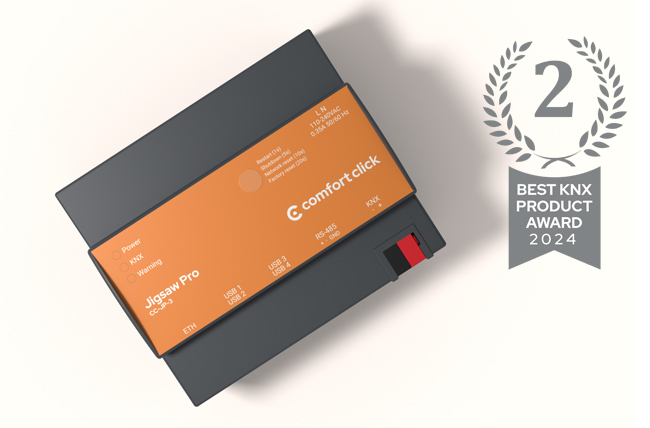ComfortClick Remote Access Security Features
20. 03. 2024
In the smart building automation sector, secure remote access to your projects is of critical concern. Here you can learn about the methodologies employed by ComfortClick to fortify its Remote Access feature against potential cyber threats utilizing Microsoft Azure for its Cloud Gateway access alongside Peer-to-Peer (P2P) technologies with Datagram Transport Layer Security (DTLS) for Remote KNX programming. This article aims to dissect the security layers that align with the rigorous cybersecurity standards mandated by the EU's NIS2 Directive. Through this examination of these technologies, you will understand how ComfortClick not only ensures the security and reliability of remote access to its systems but also adheres to the evolving landscape of EU cybersecurity legislation.
Cloud Gateway Using Microsoft Azure
Cloud Gateway connection via Microsoft Azure offers a robust foundation for secure remote connections to the ComfortClick main applications. This approach ensures that system integrators and clients enjoy the highest levels of security, leveraging Azure's comprehensive security features.
Key Points:
- Advanced Encryption: Microsoft Azure offers advanced encryption protocols to ensure data security during transmission. This includes AES 256-bit encryption for robust data protection, alongside TLS and HTTPS protocols to secure communications and web access. Azure's encryption not only secures data in transit but also adheres to stringent international and EU regulatory standards.
- Scalable and Reliable: Microsoft Azure's architecture offers dynamic scalability, effortlessly adjusting to the size and demand of any project. It features high-performance data transfer capabilities, ensuring operational continuity and speed. Azure's design for high availability and redundancy guarantees reliability, keeping smart building systems responsive and efficient at all times.
- Enhanced Network Isolation: Azure's network architecture utilizes Virtual Network (VNet) to offer isolated and highly secure networking. This virtualization ensures that data within smart building systems is transmitted over encrypted channels, distinct from public internet traffic. Through Azure's VNet, data transfer benefits from both encryption and the virtual isolation of resources, reinforcing security while maintaining high transmission efficiency. This method supports robust defense mechanisms against unauthorized access, ensuring that command executions and data flows within smart building projects are securely managed and isolated from external vulnerabilities.
Remote KNX Programming Using P2P and DTLS
For Remote KNX programming, ComfortClick employs a P2P connection enhanced with DTLS security features. This setup provides a direct link from the system integrator's computer to ComfortClick servers located within the project, ensuring end-to-end security.
Key Points:
- End-to-end Encryption: DTLS protocol secures all communications between system integrators and project servers by ensuring end-to-end encryption. This protocol adapts TLS security to datagram communications, encrypting every piece of data before it's sent and decrypting only upon reception. This method keeps the data secure from unauthorized access during transmission, crucial for remote KNX programming and smart building management.
- Direct and Secure Connection: Leveraging Peer-to-Peer (P2P) technology, ComfortClick establishes direct connections between devices, bypassing central servers. This approach reduces exposure to common vulnerabilities associated with centralized data handling, enhancing the security of data transmission for smart building management. P2P connections ensure that data travels through a more secure, direct path, significantly reducing the risk of interception or compromise.
- Compliance with EU Legislation: ComfortClick's security practices adhere to the rigorous standards outlined in the NIS2 Directive, emphasizing robust cybersecurity measures for essential services. This alignment ensures that ComfortClick's solutions meet the EU's stringent requirements for data protection and system integrity, promoting a secure digital environment for smart building automation.
Conclusion
ComfortClick employs advanced technologies like Microsoft Azure's Cloud Gateway and P2P connections with DTLS encryption to fortify its Remote Access feature. By aligning with EU cybersecurity standards, ComfortClick ensures secure and reliable access to smart building systems all over the world.
.jpg)


